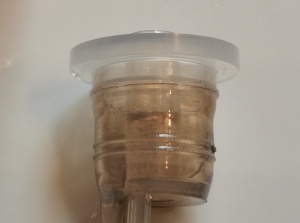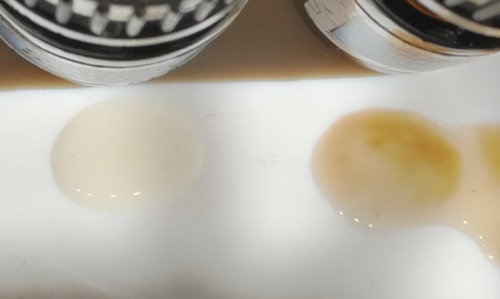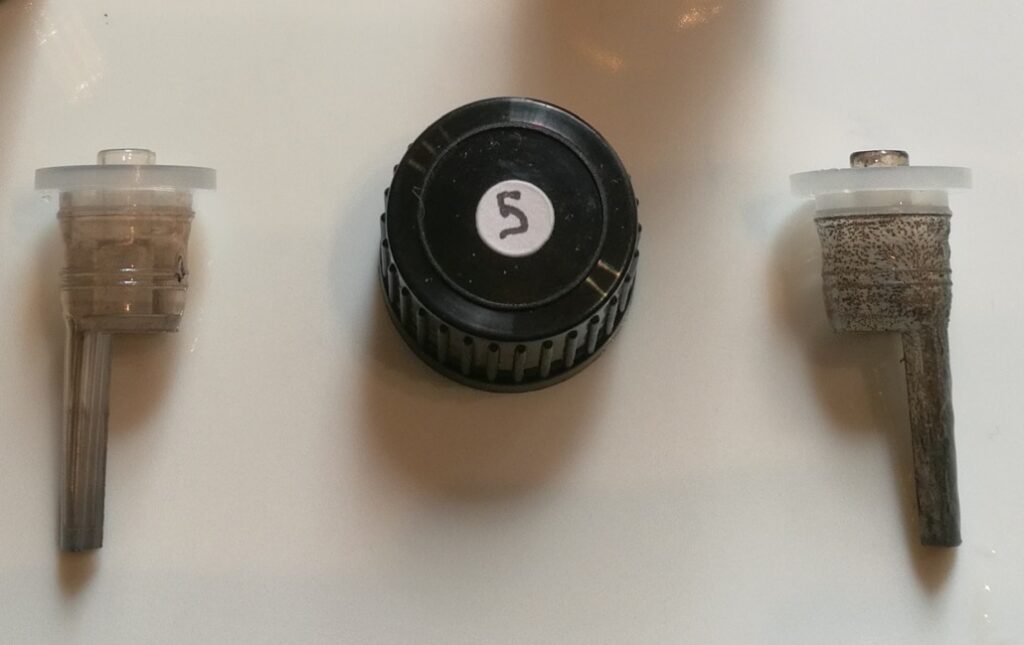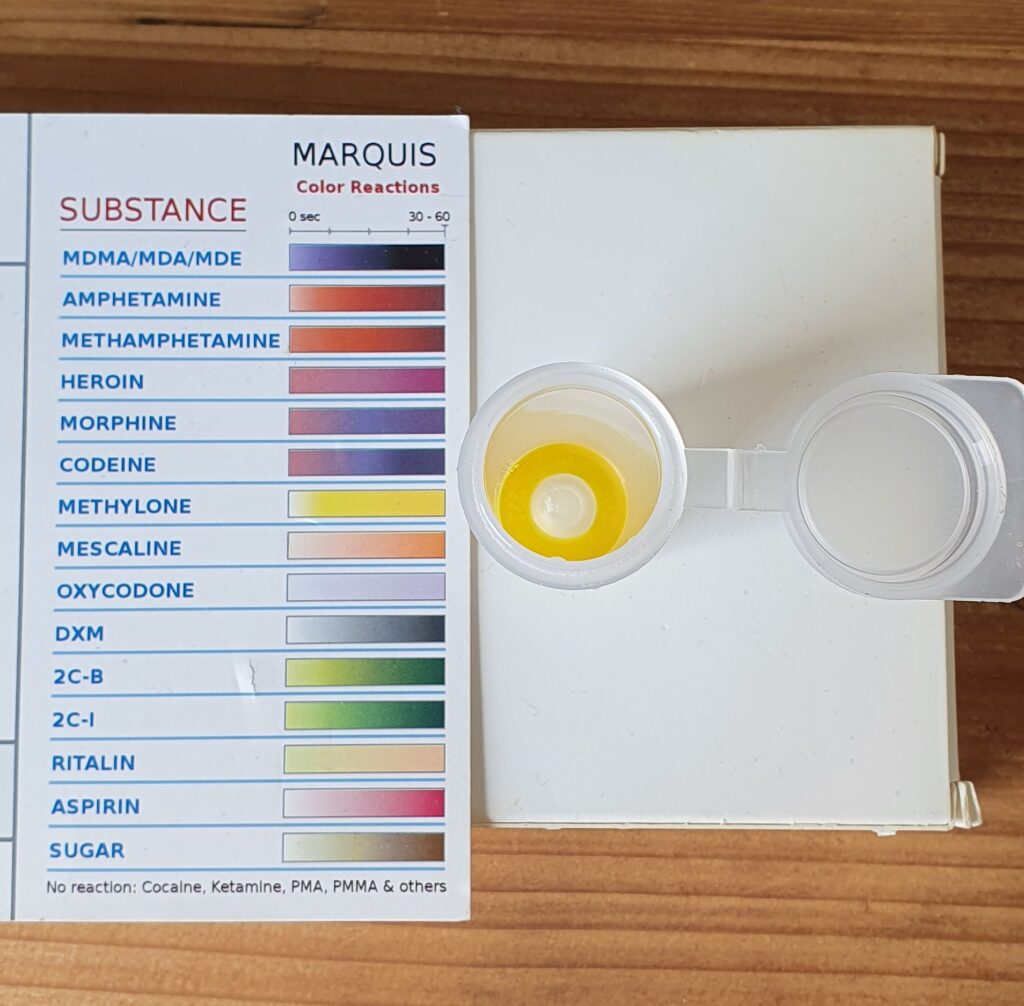This is a guest post by the pseudonymous Reddit contributor “Borax”
6-APB is an “empathogenic” (empathy-generating) drug which is structurally related to MDMA. It has very similar effects to MDMA but is often said to have a more psychedelic headspace, with a slightly more intoxicated feeling and a different perspective compared to the relative clarity of the MDMA headspace in doses around 100mg. The duration of 6-APB is a little longer than MDMA at around 6-8 hours compared to 5-6 hours.
The dosage, however, is much harder to sum up in a single sentence. 6-APB has a curious history that shines some light on its chemical variability and helps us to uncover ways to reduce the risk when consuming it.
A summary of this article:
- 6-APB can contain a lot of the inactive isomer 4-APB
- 6-APB can come in two different forms, one of which contains less molecules of 6-APB in each gram
- One form takes longer to dissolve in the stomach and can therefore trick people into taking more before they are feeling the full effects
- The same form is likely to contain a chemical left over from production. It’s thousands of times less dangerous than 6-APB and therefore not concerning but it also reduces the number of 6-APB molecules present in a powder.
It’s not possible to tell how many molecules of 6-APB are present in a particular batch without using a lab test. Therefore if you are considering taking 6-APB then you need to start with a low dose and work up over a few sessions, you must not jump in and start with a dose you have read online because you don’t know how potent your batch could be. People with the strongest form of 6-APB in high purity seem to take 70-90mg even when they are experienced.
Why does all of this happen with 6-APB but not other drugs?
The sale of 6-APB was first announced online in early-summer 2010 under the brand name “Benzo Fury” but it was not actually made available until the autumn after the release date of a full sized batch was repeatedly pushed back for undisclosed reasons. When it was finally released, early adopters commented that the appearance was more floury, not crystalline and that the effects took longer to kick in but but with everything else behaving as it should there wasn’t much concern over this.
It’s taken a few years to uncover a plausible explanation for this but 9 years later we have two major contributing factors to work with that help explain what might be happening.
The presence of isomers of 6-APB in the sample.
Using 6-bromobenzofuran as an easy intermediate for the production is ideal for vendors focused on their profit margins but isn’t so good for the consumers who might be willing to pay a bit more for a higher purity product. Bromination of benzofuran in the 6 position has a tendency to produce reasonable amounts of 4-Br-benzofuran.[1]
If producers don’t make the effort to remove these then the end product can have 4-APB present which has minimal pharmacological activity, and indeed this was regularly reported by analysis services when 6-APB at its peak popularity.[2][3]
The big difference between the two different “forms” of 6-APB (hydrochloride and succinate)
6-APB is basic, so has a high pH in its natural form. This means it can react with acids to neutralise them and form a salt. Just like sodium can react with different acids to give different salts (sodium chloride or sodium bicarbonate for example), so too can 6-APB.
Most basic drugs are reacted with hydrochloric acid for a number of reasons which could be simplified to “it’s cheap and easy to make salt crystals with” and this is usually the preferred form for most people. For MDMA crystals the hydrochloride component is so ubiquitous that most people just forget about it and scientists debate whether that’s OK.
With 6-APB it’s not so easy. For some reason 6-APB isn’t easy to crystallise with hydrochloric acid and it causes problems for bulk producers. While producing a higher purity product can sometimes circumvent these issues it was not the route that producers selected and instead they chose to start using succinic acid instead.
There is an immediate issue here; the succinic acid molecule is very big and heavy. In the best case, where we could have two molecules per 6-APB molecule, the hydrochloric acid form contains 10% more molecules of 6-APB per gram. In the worst case scenario that rises to 39%, as it could be necessary to have as much as a 1:1 ratio of succinic acid to 6-APB before we get a manageable solid form.
Succinate salts aren’t as easy to dissolve
This one is fairly self explanatory. Before a drug can be absorbed into the gut it has to dissolve into the stomach or mucus contents. If it takes a long time to dissolve then it takes a long time to be absorbed. Slowing the absorption delays the peak and some people report no effects for 1-2 hours. This is uncommon among drugs and can cause people to take more even though they don’t need to.
Succinic acid gets left behind by producers
One of the reasons that hydrochloric acid is preferred is because it is a gas when it is completely dry. This means that producers can bake something like MDMA hydrochloride in an oven and all the remaining hydrochloric acid evaporates with the last of the water.
Succinic acid isn’t so easy and its normal form is a powdery solid or crystal. This means that if a producer adds too much then it’s lots of work to remove. We don’t know why (time = money perhaps) but they don’t always do this work and batches with even lower potency than is theoretically reasonable have been found.
What does all this mean for me?
You might have noticed that a big theme in these is “uncertainty” and I think that’s a fair take-away. The hydrochloride form should be more consistent but vendors aren’t always honest about which form they sell, assuming they know at all.
The only way to bypass these issues is to get a laboratory purity test from an organisation like Energy Control International. If you don’t have access to that then you can verify that you actually have some 6-APB using the marquis reagent test and from there you need to work your way upwards slowly if you’re comfortable with the risk of taking it.


















